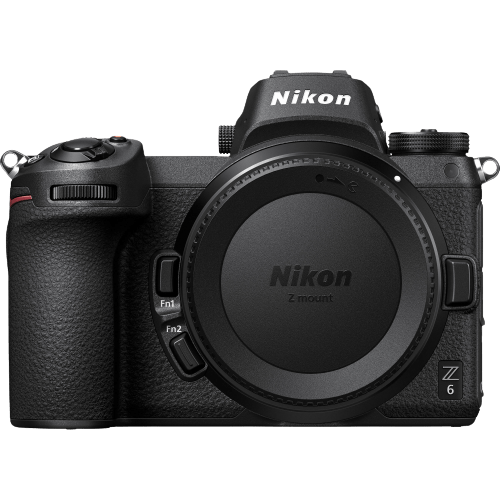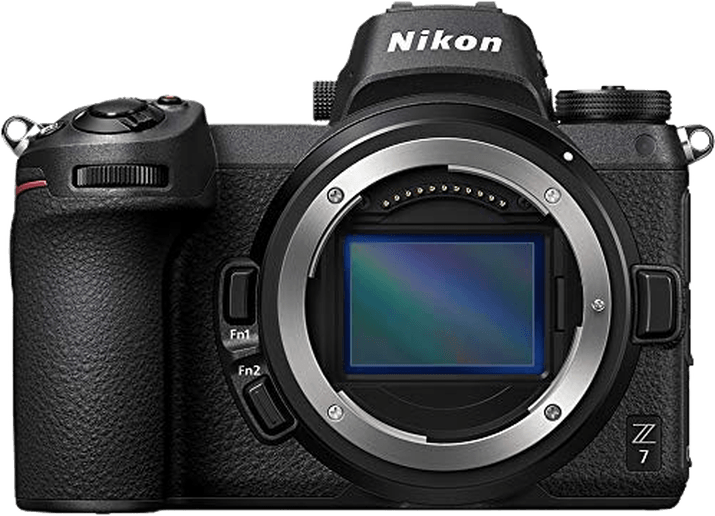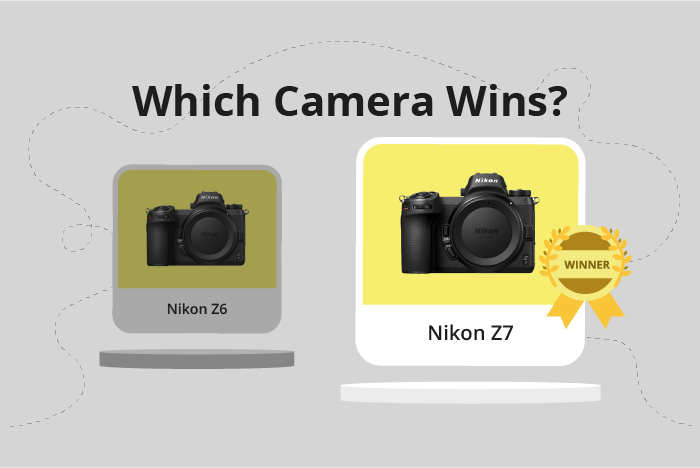Nikon Z6 vs Z7 Comparison
Nikon Z6

Nikon Z7

The Nikon Z7 edges out the Nikon Z6 with a score of 82/100 compared to 81/100. Both cameras are mirrorless, announced on 08/23/2018, and share identical dimensions (134 x 101 x 68mm) and weight (675g / 1.49lbs). The Z7 justifies its higher score with better specifications, despite a higher launch price of $3400 compared to the Z6’s $2000.
Since the cameras share many specs, it’s essential to focus on their differences. The Z7 offers superior performance in certain areas, which contributes to its higher score. The Z6, on the other hand, might excel in some aspects, but not enough to outshine the Z7.
Ultimately, both cameras are strong contenders in the mirrorless market, with the Nikon Z7 taking a slight lead due to its better specs. However, the Nikon Z6 remains a solid option for those on a tighter budget.
Nikon Z6 vs Z7 Overview and Optics
The Nikon Z7 emerges as the winner in the optics comparison with a score of 86/100, while the Nikon Z6 scores 83/100. Both cameras share several specifications, including a CMOS sensor, Expeed 6 processor, full-frame sensor size, Nikon Z lens mount, and built-in image stabilization.
The Nikon Z7 outperforms the Z6 with its higher megapixel count of 45.7, compared to the Z6’s 24.5 megapixels. This difference allows the Z7 to capture more detail and produce higher resolution images. Additionally, the Z7 boasts a higher DXOMARK sensor score of 99, compared to the Z6’s 95, indicating better overall image quality and low-light performance.
On the other hand, the Nikon Z6 offers a faster shooting speed of 12 frames per second (fps), compared to the Z7’s 9 fps. This advantage makes the Z6 a more suitable choice for capturing fast-moving subjects and action photography.
In terms of optics, the Nikon Z7 provides superior image quality and resolution due to its higher megapixel count and DXOMARK sensor score. This makes it an ideal choice for photographers who prioritize detail and image clarity. However, the Nikon Z6 offers a faster shooting speed, making it a better option for those who often shoot action or fast-moving subjects. Both cameras share essential features such as sensor type, processor, sensor size, lens mount, and image stabilization, making them versatile and reliable choices for a wide range of photography styles.
Nikon Z6 vs Z7 Video Performance
The Nikon Z6 and Nikon Z7 both have a video score of 83/100, indicating that they have similar video capabilities. They share common specifications, including a max video resolution of 4K, max video dimensions of 3840 x 2160, a max video frame rate of 60fps, and built-in time-lapse functionality.
Despite their identical scores, the Nikon Z6 has some advantages over the Nikon Z7 in terms of video capabilities. The Z6 performs better in low-light conditions, providing cleaner footage with less noise. Additionally, the Z6 has a faster sensor readout, resulting in reduced rolling shutter artifacts and better image quality in fast-paced situations.
On the other hand, the Nikon Z7 has its own strengths. The Z7’s higher resolution sensor allows for more detailed video capture, particularly when shooting in high-resolution formats. This can be beneficial for those who require the highest possible image quality for their projects.
In terms of video capabilities, both the Nikon Z6 and Nikon Z7 are strong contenders, each with their own unique advantages. The Z6 excels in low-light performance and fast-paced situations, while the Z7 offers higher resolution video capture. Ultimately, the choice between the two cameras will depend on the specific needs and preferences of the user.
Nikon Z6 vs Z7 Features and Benefits
The Nikon Z6 and Nikon Z7 both have a feature score of 87/100, making them equal in this aspect. These cameras share several specifications, including a 3.2-inch screen size, 2,100,000-dot screen resolution, touchscreen capability, GPS absence, WIFI, and Bluetooth connectivity.
The Nikon Z7 has an advantage over the Z6 because it features a flip screen. This flip screen allows for more versatile shooting angles and better composition, especially in challenging environments or when capturing selfies. The Z7’s flip screen is a significant benefit for photographers who require flexibility and adaptability in their shooting styles.
On the other hand, the Nikon Z6 does not have any specific features that make it better than the Z7. Both cameras have an identical feature score and share most specifications. The lack of a flip screen on the Z6 is its only disadvantage compared to the Z7.
Therefore, the Nikon Z7 is the better choice for photographers who need the added versatility of a flip screen. The Z6 is still a great camera, but it lacks the flip screen feature available on the Z7. When considering the feature set of both cameras, the Z7 stands out as the more versatile option, making it the better choice for those who value adaptability in their photography.
Nikon Z6 vs Z7 Storage and Battery
The Nikon Z6 and Nikon Z7 both score 35/100 in storage and battery, making them equal in this aspect. They share the same specifications, with each having one memory card slot that accepts XQD cards. Both cameras use the EN-EL15b battery type and offer USB charging capabilities.
The Nikon Z7, however, has a slightly better battery life, providing 330 shots compared to the Z6’s 310 shots. This advantage is minor but could be beneficial for photographers who need longer shooting sessions without changing batteries.
On the other hand, the Nikon Z6 doesn’t have any specific advantage in storage and battery over the Z7, as their specifications are nearly identical. The minor difference in battery life is not enough to declare a clear winner in this category.
Taking these factors into account, neither camera outshines the other in terms of storage and battery. Both the Nikon Z6 and Z7 offer similar performance, with the Z7 having a slight edge in battery life. Ultimately, the choice between these cameras should be based on other factors such as price, image quality, and specific features that cater to the photographer’s needs.
Alternatives to the Nikon Z6 and Z7
Are you still undecided about which camera is right for you? Have a look at these popular comparisons that feature the Nikon Z6 or the Nikon Z7:

